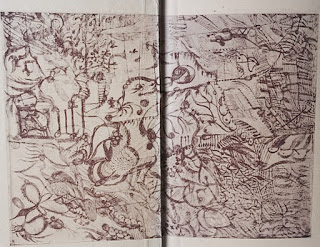
Found - a curious and very rare spiritualist book The Spirit of Irene Speaks published in Bournemouth in 1923. The title refers to a notorious murder in 1922 of a young cook, Irene Wilkins, who had travelled down to Bournemouth to London in response to a potential employer from an advertisement she had placed in a local paper. She had been met at the station in a large Mercedes and her body was found in a field the next day battered to death. Eventually a chauffeur was arrested, one Thomas Henry Allaway. An astute car designer had noted the car's registration number at the station and he was also recognised by a telegram clerk… The book claims that through 'psychometrics' (in this case the psychic tracing of the murderer through clairvoyant communications from an object from the murder scene) a medium had solved the case and there is a weight of convincing evidence in the book and suggestion of police co-operation. No account of the case found online mentions this aspect of the case.
However the book is notable for other reasons. It has a long plea at the beginning by Dr Abraham Wallace for the repeal of capital punishment as being irrational and unchristian and a further article on 'The Futility of Capital Punishment.' The endpapers of the books are designed by the cult outsider artist Madge Gill. She is mentioned in the text as having produced these 'automatic drawings'. She is called Madge E. Gill from London ('this lady through her mediumship obtains gorgeous oriental designs in marvellous colour schemes, and quite unusual in conception. She also, under control, does the most beautiful embroidery and needlework…)

Madge Gill (1882- 1961) was a prolific outsider and visionary artist. She was introduced to Spiritualism by an aunt when she was in her teens in East London. Later when she was about 40 she began creating thousands of mediumistic most done with ink in black and white. She claimed to be guided by a spirit she called "Myrninerest" (my inner rest) and often signed her works in this name. Many feature a young woman in intricate dress often thought to be a representation of herself or her lost (stillborn) daughter, and female subjects dominate her work. Her drawings are characterised by geometric chequered patterns and organic ornamentation, with the blank staring eyes of female faces and their flowing clothing interweaving into the surrounding complex patterns.These endpaper drawings, different at both ends (rear endpapers pictured) do not have the female face…a book on her came out in 2013 by the musician and occultist David Tibet.
